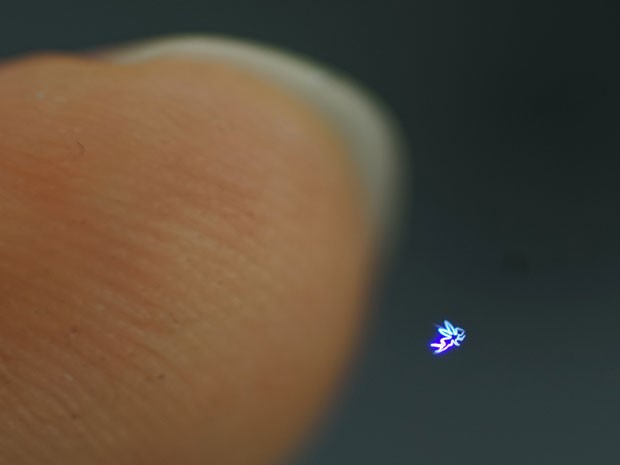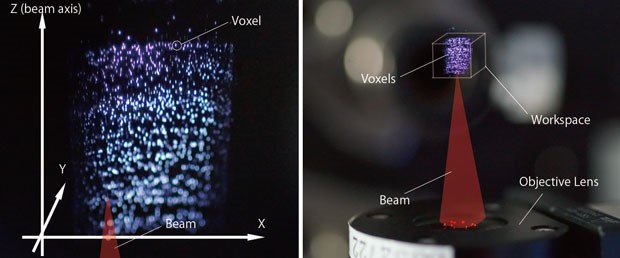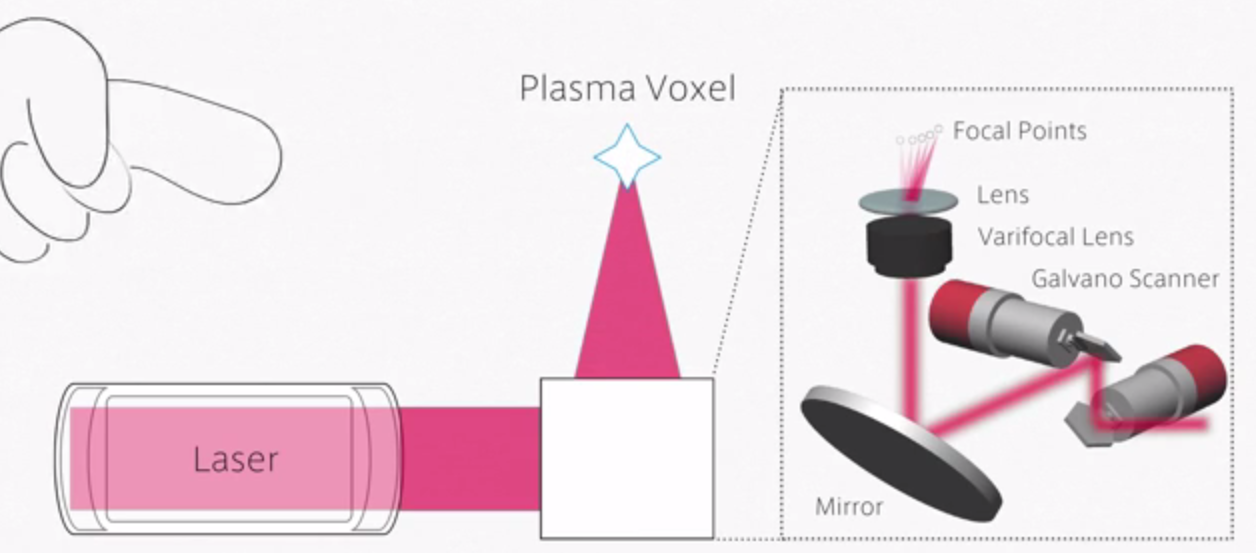
All those faux-holograms of Tupac and Michael Jackson that wound up being nothing more than smoke and mirrors have got nothing on the researchers at Digital Nature Group (DNG), for they’ve devised a way to not only create real holograms using a super-fast laser, but interactive holograms you can touch.
A few years ago, a Japanese company called Aerial Burton successfully suspended bright voxels midair by ionizing air with laser and generating a floating hot plasma — which in turn — emitted glowing photons that emulated the appearance of a hologram.
This plasma, by its very nature, was extremely hot to the touch and capable of burning. But now, after updating the same system with a femtosecond laser, the DNG researchers created floating three-dimensional images with a much higher resolution — 200,000 dots per second — that’s safe to the touch.

Femtosecond lasers are so fast that they transmit bursts within 30 to 270 femtoseconds (one femtosecond is equivalent to a quadrillionth of a second), too short of a duration to cause burning. In simulated tests, the scientists observed that lasers fired in more than two second bursts incinerated the leather used to stimulate skin, but shortening the pulse duration between 50 milliseconds and 1 second did not cause any noticeable damage.
Instead, the plasma-induced holograms feel like sandpaper or static shock, explains principal investigator Yoichi Ochiai; because a femto-scale plasma burst produces a considerable amount of energy, there is still a sense of haptic feedback when touching the light.

To that extent, the holograms are created by firing the femtosecond laser through a spatial light modulator, which then passes the beam through a mirror, a Galvano scanner, and a series of lenses to precisely control the laser’s area of effect. Finally, a camera tucked beneath the hologram captures the interaction, allowing the scientists to manipulate the image and respond to a user’s touch.
Take note that the resulting holograms are miniature, encompassing a workspace of only eight cubic millimeters. The technology is clearly a proof of concept that’s limited by the size of the spatial light modulator, although the 200,000 voxel per second resolution is quite respectable. With a bit of upscaling, it wouldn’t be too unrealistic to assume that the technology may someday find its way into consumer electronics. Hologram projecting smartphones anyone?
Source: Popsci.com
Advertisement
Learn more about Electronic Products Magazine





